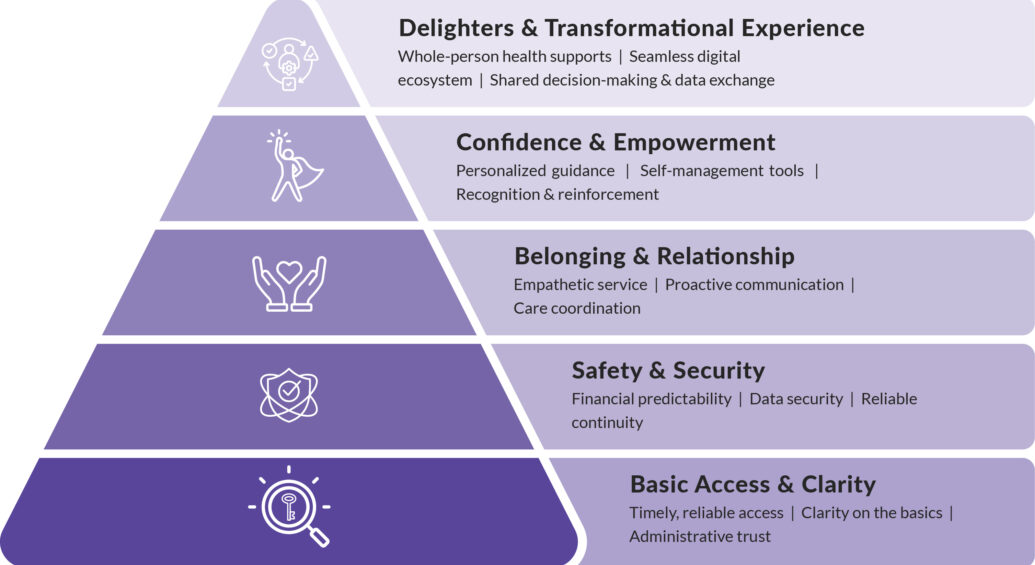What Maslow Can Teach Us About Healthcare Consumer Engagement

Everyone in healthcare wants to crack the code on engagement and loyalty. For many, it’s tempting to borrow inspiration from other industries that appear to have it figured out. Sleek digital tools, wellness perks, and next-gen portals may create stickiness elsewhere, but in healthcare, they rarely move the needle.
Why? Because healthcare is different. Trust is fragile, stakes are high, and reliability matters more than novelty. A flashy portal or lifestyle benefit won’t make up for a denied claim or a confusing bill. True engagement starts with getting the basics right. And that’s where Maslow’s hierarchy of needs offers a useful parallel. Building a solid foundation creates the conditions that allow higher-order connections to grow and last.
Here’s what a Healthcare Consumer Hierarchy of Engagement Needs might look like:

1. Foundational (Basic Access & Clarity)
Consumers want timely, reliable access: short hold times, intuitive navigation, and the ability to reach a human when it matters. They expect simple, accurate bills and benefits they can actually understand, and they want to trust that their claims are processed correctly. Fail here, and frustration will overshadow every higher-order engagement effort.
2. Safety & Security
Financial and personal security comes in many forms. Consumers seek transparency on costs, predictable coverage, and confidence that their data is protected. They also require stability. Knowing their provider and medications won’t suddenly be out of network builds trust and steadies the relationship with the plan.
3. Belonging & Relationship
When the basics are reliable, trust can grow. Empathy and cultural competency are essential to creating respectful, compassionate interactions at every touchpoint. By meeting consumers where they are, not just as patients or members, but as people—through proactive reminders, preventive care outreach, and seamless coordination, organizations show that they truly know and support them. This is the turning point where engagement can move from transactional to relational.
4. Esteem (Confidence & Empowerment)
At this level, consumers gain confidence in their ability to manage their health. They value personalized guidance, culturally competent communication, and tools that make self-management simple. Recognition, whether through incentives or acknowledgement of progress, can help to reinforce their efforts.
5. Self-Actualization (Transformational Experience)
Finally, we reach the “delighters.” Whole-person health supports, like fitness memberships, behavioral health integration, or meal delivery, become meaningful when layered on top of a trusted foundation. Seamless digital ecosystems and shared decision-making empower consumers to co-create their health journey with a partner they know and trust.
The Core Insight
Just like Maslow’s framework, this isn’t rigidly linear, consumers may move between levels. But foundational reliability is the non-negotiable floor. If access is clunky, billing is confusing, or claims are mishandled, no amount of delighters will compensate.
For healthcare organizations, the challenge is clear: start with the basics, earn trust, then build upward. Engagement isn’t about adding more perks, it’s about climbing the hierarchy with consumers, step by step.


